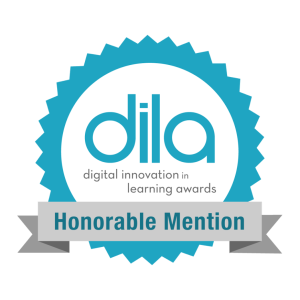Story Savvy
What is it about storytelling that is so captivating? I’ve always been impressed by the relative ease in which a master storyteller is able to connect with others. I’ve also noticed that a good story always evokes a response. If I’m being completely honest, there are times I’m envious of a great storyteller’s ability to deliver a message to a completely engaged audience. I occasionally catch myself thinking, “If only I could deliver a story like she can…I’d probably do more public speaking if I had that kind of charisma.”
Kids don’t require master storytellers…they just need somebody savvy enough to pen a few lines or to speak on their behalf. I’ve come to embrace the notion that our students are counting on us to tell their stories. They are also counting on us to muddle through our own vulnerabilities to champion an important narrative. Students need us to be “story savvy.”
Being savvy simply means that we understand or get the sense of something (Dictionary.com, 2014). It’s similar to a person that’s tech savvy. An individual that’s regarded as tech savvy understands the problem-solving required to learn new technologies. An educator that is story savvy understands the value of sharing students’ stories, and effectively communicates them in many ways…including conversation, social media, and other Web 2.0 tools.
Here are five steps to help you be a “Story Savvy” educator:
S – omebody Else
Believe it or not, somebody else is probably already telling your school’s story! It’s true…so you may as well share your authentic observations and professional reflections. After all, who would you rather share important information about your students and school? It’s important that our communities hear from us. While you’re at it…share your school’s story with passion and transparency. We are in classrooms on a daily basis and see the amazing work our students are doing firsthand; we have a reason to be excited! Be sure to keep the stories you share positive and altruistic and let somebody else share those other kind.
A – cknowledge
Acknowledge the heroic efforts of staff and parent volunteers. Sharing encouragement and affirming the teamwork it takes to make a school great is an important narrative. We cannot do it alone, so why not give thanks to the people that make it all happen. An attitude of gratitude is contagious…pass it on! Acknowledge the difference our teachers are making in your stories.
V – oice
Student voice matters. Be sure that your stories empower kids to develop their capacity to communicate, create, collaborate, and think critically. Better yet…foster students’ leadership potential by passing them the microphone and providing an authentic audience. Their voice is typically more impactful and interesting than ours anyways…let them speak and be sure to listen!
V – ision
Vision doesn’t talk but people do! How many times have you been on the sidelines of a soccer game and overhear parents discussing your school’s vision? (Insert cricket sound effect here.)
There is a better way to communicate your school’s vision with remarkable clarity and that’s through stories! Highlight activities that exemplify your vision for a 21st century student learning experience. Even better…let your students share the work they are doing that aligns with steps towards vision. Your vision comes to life through the pictures of smiling students and emotions associated with their successes.
Our school community and tax payers have made a tremendous investment in our schools and we can be accountable through the results being achieved. Share those stories! Your stories can serve as a pathway to a better future and vision attainment.
Y – our Words
If a tree falls down in a forest does it make a sound? If a principal types a newsletter that nobody reads is it a compelling story? Your words matter, so why not share them in a relevant format? Leverage social media, video podcasting, and innovative new mediums to connect your words to those you serve in a manner that they prefer. People will tend to fill in the blanks if your words are absent. Communicate with constituents so they are informed and able to support the important work being done for our students.
Posted on April 15, 2014, in Uncategorized and tagged charisma, Communication, crickets, gratitude., inspiration, podcasting, savvy, storyteller, Storytelling, student voice, vision. Bookmark the permalink. Leave a comment.














Leave a comment
Comments 0